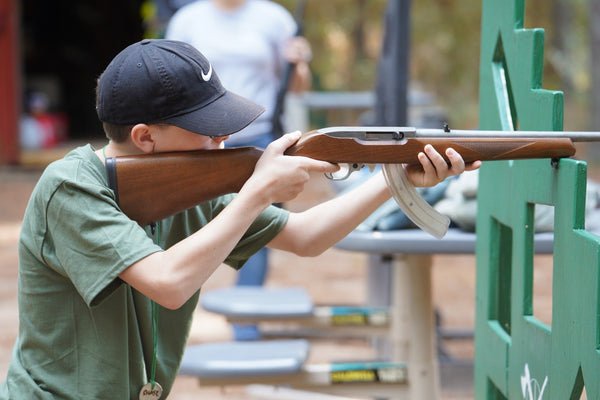Top 8 Pro Tips for Your Family’s Bug‑Out Vehicle
Selecting the ideal urban family “bug‑out” vehicle (BOV) requires balancing storage, off‑road prowess, fuel range, reliability, maintenance ease, power/communications, seating comfort, and customization potential. Each feature ensures you can evacuate swiftly, carry essential gear, stay powered and informed, and keep your family safe and comfortable—all while adapting your rig for the unpredictable urban environment. Below are the eight critical features, each paired with a Survivalist Pro Tip.
1. Generous Storage Capacity
A true bug‑out vehicle must haul food, water, first‑aid kits, tools, and family gear without cramping your space TruePrepper. Roof racks, under‑seat bins, and fold‑flat rear seats all multiply storage options for long‑term sustenance Good Neighbor Supply.
Survivalist Pro Tip: Outfit your vehicle with modular cargo organizers and quick‑release tie‑down straps so you can reconfigure storage on the fly and know exactly where every essential item is packed.
2. Robust Off‑Road Capability
In urban crises, streets may be blocked or damaged, forcing you onto dirt paths, gravel lots, or debris‑strewn lanes TruePrepper. A four‑wheel‑drive system with low‑range gearing, skid plates, and all‑terrain tires ensures you can navigate unpaved routes and bypass gridlocked highways Good Neighbor Supply.
Survivalist Pro Tip: Invest in a portable air compressor and learn to adjust tire pressure. Lowering tire PSI on soft surfaces increases traction and ride comfort, then reinflate for highway speeds.
3. Extended Fuel Range & Efficiency
Long-range fuel tanks or auxiliary jerry cans transform a typical 300‑mile range into over 600–1,000 miles, reducing risky refueling stops RedditTruePrepper. Choosing a fuel‑efficient engine or hybrid model cuts the frequency of fuel runs—vital when stations are closed or unsafe Survival Dispatch.
Survivalist Pro Tip: Carry at least two sealed, nestled jerry cans of fuel, and rotate contents every six months to keep gasoline fresh. Also pack fuel‑stabilizer tablets for long‑term storage.
4. Rock‑Solid Reliability & Durability
Your BOV must run under stress, so select models known for legendary reliability—Toyota Land Cruisers, Jeep Wranglers, or older 4Runners. Their mechanical simplicity minimizes electronic failures Urban Survival Site.
Survivalist Pro Tip: Use high‑quality synthetic oil and a severe‑service filter. Perform pre‑trip inspections of belts, hoses, and fluids before every long haul to prevent breakdowns in hostile zones.
5. Ease of Maintenance & Common Parts
In emergencies, roadside repairs are inevitable. Platforms with abundant aftermarket support—Ford F‑150, Chevrolet Silverado, Jeep Cherokee—mean parts are everywhere and local mechanics know them well modernwarriorproject.com.
Survivalist Pro Tip: Stash a compact mechanic’s toolkit with metric and SAE sockets, spare belts, fuses, and fluids. Familiarize yourself with basic repairs like belt changes and fuse swaps.
6. Integrated Power & Communications
A dual‑battery setup powers comms gear—radios, phone chargers, portable fridges—without draining the starter battery Integrated Skills Group. Roof‑mounted solar panels or a small generator extend off‑grid power for days.
Survivalist Pro Tip: Install a heavy‑duty power panel with Anderson‐style connectors for rapid hook‑up of emergency electronics, and use a HAM/GMRS radio for reliable group communication.
7. Spacious Seating & Family Comfort
Your bug‑out vehicle doubles as daily transport, so three‑row SUVs like Ford Explorer or minivan conversions carry 5–7 passengers plus gear Tactical Blog | Tactical Gear Reviews. Climate control, sunshades, and ergonomic seats keep kids comfortable during extended evacuations.
Survivalist Pro Tip: Keep a roll of emergency Mylar blankets, collapsible sunshades, and mini‑pillows stowed under seats—perfect for impromptu naps or blocking glare when you’re parked.
8. Customization & Accessory Flexibility
A true urban BOV adapts—winches for water‐logged streets, rooftop tents for impromptu shelter, and aftermarket bumpers for urban barriers Good Neighbor Supply. Removable rack systems let you swap bike carriers, kayak mounts, or extra cargo boxes as needs change.
Survivalist Pro Tip: Use modular M‑LOK or Rhino‑rack crossbars on the roof and bed rails. They accept multiple attachments—cargo trays, solar panels, awnings—letting you reconfigure your rig for each scenario.
By prioritizing these eight features—storage, off‑road, fuel, reliability, maintenance, power, seating, and customization—you’ll transform any family vehicle into a resilient urban bug‑out platform. Stay prepared, stay mobile, and ensure your loved ones can evacuate swiftly and safely when the unexpected hits.
Also in BLOG

8 Ruger 10/22 Family Range Games (With Pro Tips for Dad & Kids)
Ready to make your next trip to the range a memory your family will talk about for years? The Ruger 10/22 is perfect for introducing youngsters to marksmanship—it’s light, low-recoil, and fun to shoot. Below are eight range games to sharpen skills and spark smiles.

Less Clothing, More Confidence: 7 Conceal-Carry Secrets
As the temperature climbs, fewer layers make concealing a firearm more challenging—but far from impossible. By combining the right holsters, carry systems, and clothing choices, you can stay cool, comfortable, and covered all summer long.

7 Reasons the Ruger 10/22 is the Ultimate Starter Rifle (with Pro Tips!)
The most common question received by firearm trainers is "What's the best rifle to start with?" The answer? The Ruger 10/22. This iconic .22 LR semi-automatic rifle is a staple in the shooting community, and for good reason. Whether you're introducing a friend to the sport or looking for a reliable plinker, the 10/22 delivers. Here are seven reasons why it's the perfect choice, each paired with a pro tip to enhance your shooting experience.
